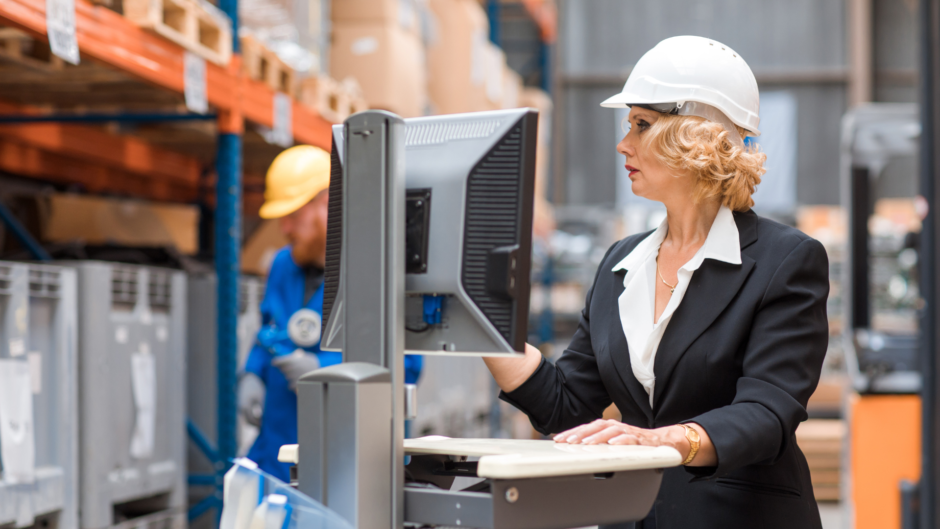Aside from accident prevention, distribution centers must make several efforts to ensure the safety of employees, customers, and the community. Distribution centers can be dangerous places full of heavy objects and large machinery, but with proper planning and training, distribution centers can cut down on accidents, including the danger of slips and falls. Suppose you are an employer of a distribution center. In that case, you must create a culture that values the safety of their employees over efficiency and profit, which many large corporations struggle with. At the end of the day, however, safety is the most important thing, so here are ten tips for distribution center safety:
Provide Proper Training
Proper training is the most effective form of accident prevention. Instructing employees in proper behavior and practice helps prevent accidents and injuries. Safety training is best when directly taught to employees, but it may also be done by online safety training modules that cover different areas. Regular refresher training is also important, as it helps to remind people of things they may have forgotten.
Use Proper Equipment and Storage Solutions
Using proper equipment, such as high visibility clothing, impact-resistant hard hats, and the proper tools for the job will help employees avoid injuries. As an employer, you must be responsible for providing proper equipment, and employees must be responsible for using it correctly. Distribution centers handle a wide variety of materials, from fragile goods to heavy machinery components. Therefore, proper storage solutions are equally essential to prevent accidents, protect inventory, and ensure efficient operations. For instance, when dealing with bulky or irregularly shaped items like sheet metal, you might ask yourself: How to best store your sheet metal. To answer this, there are specialized racks or shelving units designed to securely hold such materials that can minimize the risk of toppling or falling objects. Beyond investing in the right storage equipment, you should implement well-planned storage strategies. This could involve separating hazardous materials from other inventory, organizing items based on weight, size, or frequency of use, and maintaining clear walkways and access routes. Effective storage not only enhances safety but also improves productivity by making it easier for employees to locate and retrieve items quickly. Whether storing delicate electronics, heavy machinery parts, or sheet metal components, you must prioritize appropriate storage methods as per the needs of your inventory. By doing so, you can significantly reduce the likelihood of accidents, ensuring the well-being of the workforce and the integrity of their operations.
Maintain Safe Work Areas
The most important safety consideration at distribution centers is ensuring a safe work environment for employees and customers. This means keeping fire exits clear, removing rubbish and waste promptly, providing adequate ventilation and lighting, and maintaining a safe temperature, either through ambient heating or cooling or by providing warm/cool clothing. Additionally, it’s crucial to prioritize the well-being of employees who often face challenges especially while handling heavy objects and operating large machinery at the workstation. Employees may experience fatigue, nausea, or tiredness. Therefore, in managing fatigue when using machinery, employers must provide workers with adequate breaks, healthy food and snacks, medications when necessary and clean drinking water. Taking care of employee wellness is essential for maintaining a safe and productive work environment.
Use Proper Signage
Proper signage keeps all workers safe, and they all need to be visible at all times. This not only saves lives but prevents injuries from work-related accidents. Safety signs should be clean and free of unnecessary distractions. They should be posted or displayed where they can be seen easily by workers and visitors. The size and placement should be considered too.
Provide Proper Footwear
Cover all your bases by providing the right footwear. Look for something with slip-resistant soles and a good tread. If working with heavy items, steel-toe cap boots should be provided to protect toes, whilst ankle support should be considered if twisting and turning is part of the job. Waterproofing and fur lining may also be important depending on your working conditions.
Use Proper Lifting Techniques
Employees should be taught to always lift with their legs, bend then knees and push from their toes. The back should bend as little as possible, and nothing should ever be lifted above chest-height. They should use a hand crank to lift objects too heavy to carry comfortably, whilst a forklift should be used for larger objects.
Provide Proper Hand Protection
Gloves protect again the cold, scrapes, cuts, heat and chemicals, so they’re useful in a wide range of situations. They also help to protect against repetitive movements, preventing blisters and dryness. This is important in distribution centers where workers are often handling many objects a day that could easily damage their hands.
Use Fire Prevention Equipment
Distribution centers are often full of combustible materials, posing a significant fire risk. Ideally, these centers should have fire compartmentation in place to contain fires within specific areas, thus minimizing their spread and potential damage. If you are wondering, “What is Fire Compartmentation?“, well, it is a fire safety measure that involves dividing a building into separate compartments or fire zones with fire-resistant barriers.
Apart from this, keep in mind that fire doors should be closed at all times, fire exits should be clear and well sign-posted, fire blankets and extinguishers should be available within a reasonable distance of each workstation, and fire alarms should be installed at regular intervals on the walls. Additionally, in case of any damage due to a fire, it’s necessary to fix the issues at the earliest with the help of a fire damage reconstruction service.
Use Proper Ladders
Proper ladder use can help reduce the risk of fall accidents. Using the right ladder for the job can help avoid accidents on the warehouse floor. Warehouse employees and managers should have training on selecting ladders, checking the ladder for defects, and using the ladder safely. Improper use, like climbing the ladder from the side or stretching too far, can result in worker injuries.
Prevent Unsafe Driver Behavior
For distribution centers, vehicles are commonly used. Employees driving in distribution centers need to be aware of vehicle blind spots and pedestrians. In warehouses, forklifts must be driven with care to prevent accidents.
Distributors are placing a strong emphasis on safety. Most distribution centers now have at least one person dedicated to safety and are increasingly using safety management software. This can save warehousing companies millions of dollars annually by avoiding accidents and injury claims.


